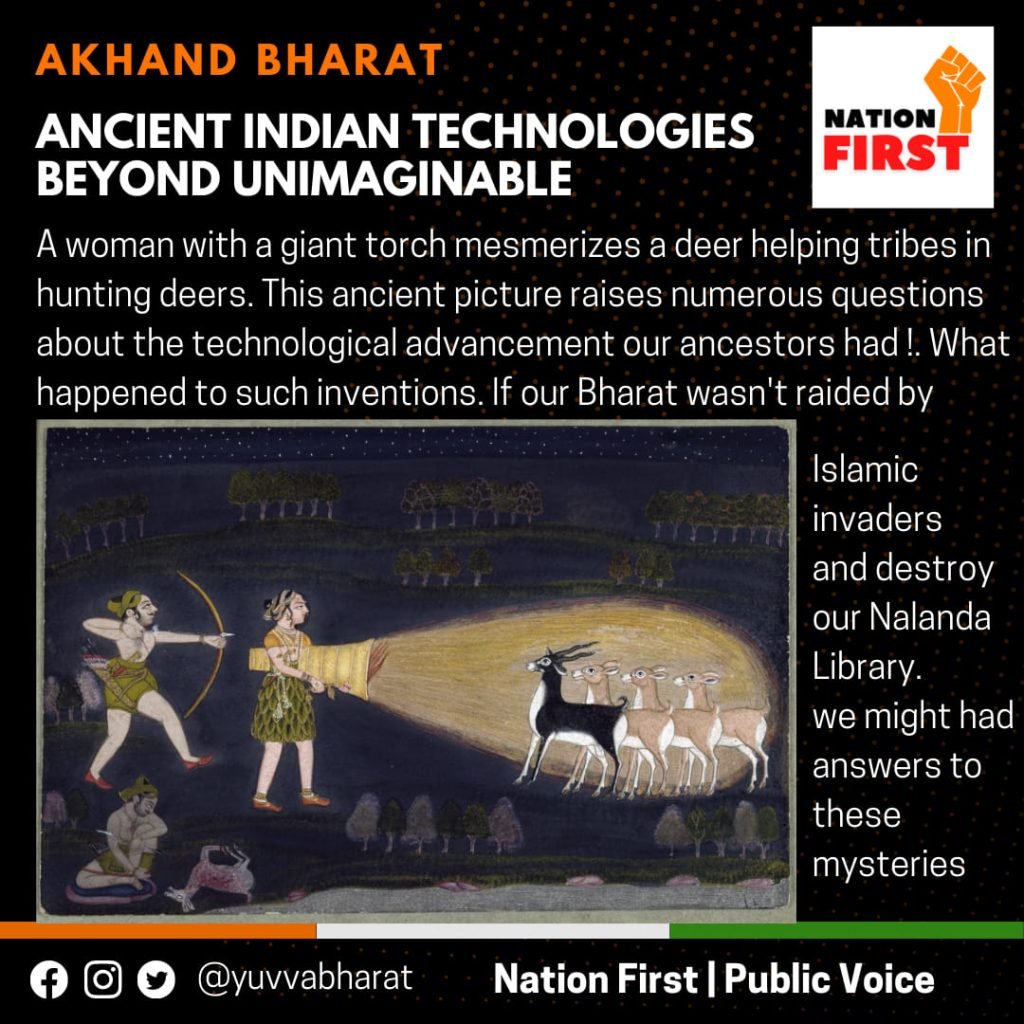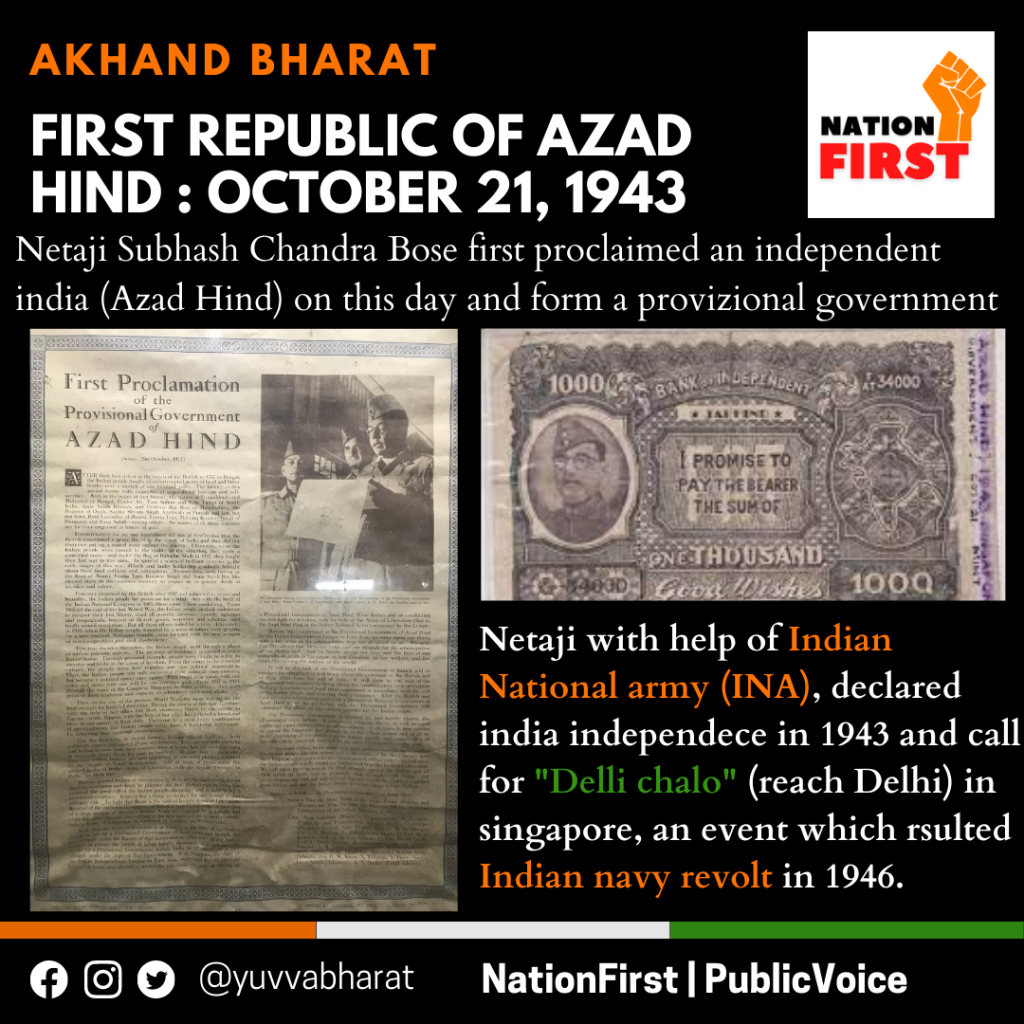A woman of unflagging courage and spirit, Rani Tarabai Bhonsle of the Marathas left an indelible mark on Indian history. Yet few know her incredible story.
At Kolhapur’s central square stands the beautiful statue of warrior queen astride a horse. One of the grittiest characters in Indian history, this woman was also called the ‘rainha dos Marathas’ or the ‘Queen of the Marathas’ by the Portuguese. She is Rani Tarabai Bhonsle, the brave daughter-in-law of Chhatrapati Shivaji and one of India’s greatest medieval monarchs.
Among the few women in history to save a kingdom by sheer force and willpower, Rani Tarabai’s unflagging courage and indomitable spirit are at par with the legendary Rani Laxmi Bai of Jhansi, Rani Rudramma Devi of Warangal and Rani Abbakka Chowta of Ullal. Yet, little is written about this warrior queen or her incredible story.
Also Read : Rani Velu Nachiyar : The bravest queen of India
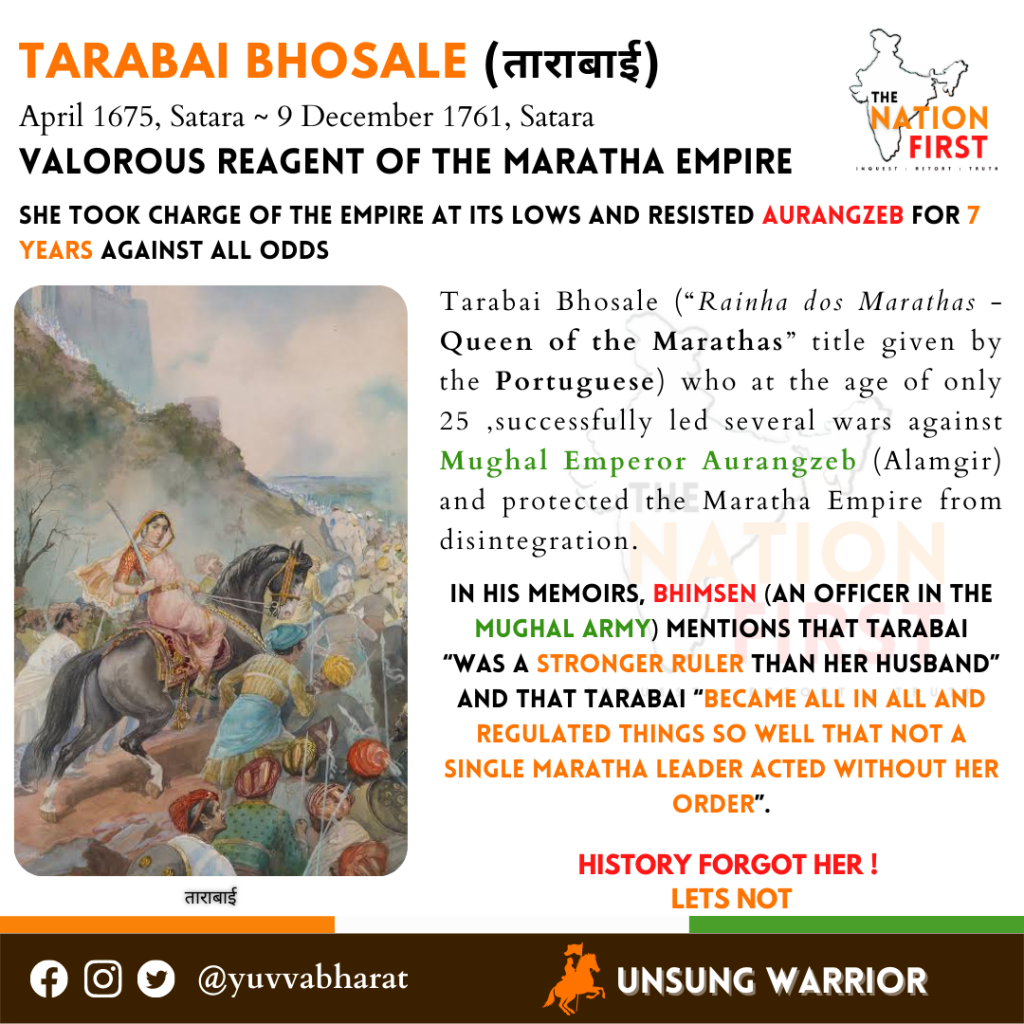
The Beginning
Born in 1675, Tarabai was the daughter of Hambir Rao Mohite, the famed Sar Senapati (commander-in-chief) of Shivaji’s Maratha army. Fiercely independent as a young girl, she was well-trained in sword fighting, archery, cavalry, military strategy, diplomacy and all other subjects of statecraft.
A woman who witnessed the rise and fall of the Marathas, Tarabai was just eight-years-old when she was married to Shivaji’s younger son Rajaram. This was an era when the Mughals and the Marathas were constantly at war for control over the Deccan.
In 1674, Shivaji had been crowned the ruler of the independent Maratha kingdom established by him. Under his able leadership, the empire quickly became a key political force in India at the height of Mughal power.
However, the legendary leader passed away in 1680, with the years after his death seeing the Marathas pass through their toughest time.
The Burning Legacy
The year 1689 saw the eldest son of Shivaji and his first wife Saibai, Sambhaji (who had led the Marathas for nearly a decade) being captured and put to death after Raigad fort fell to a Mughal army of over fifteen thousand. His wife, Yesubai and son, Shahu, were captured and taken to the Mughal court as hostages.
During the same battle, the new Maratha king — Rajaram (Shivaji’s second son and Tarabai’s husband — managed to escape from Raigad using a disguise. He eventually made his way to the Gingee fort (in present-day Tamil Nadu), before setting up court at Satara. However, in yet another blow to the Marathas, he passed away due to lung disease in 1700 after an extremely short reign.
A month after his sudden death, Tarabai took over the reins of the Maratha kingdom as regent (for her 4-year-old son, Shivaji II). Realizing the urgent need for strategic and stable leadership if the Marathas were to stop the Mughal onslaught (led by Aurangzeb himself), the 25-year-old widow also took command of the Maratha army.
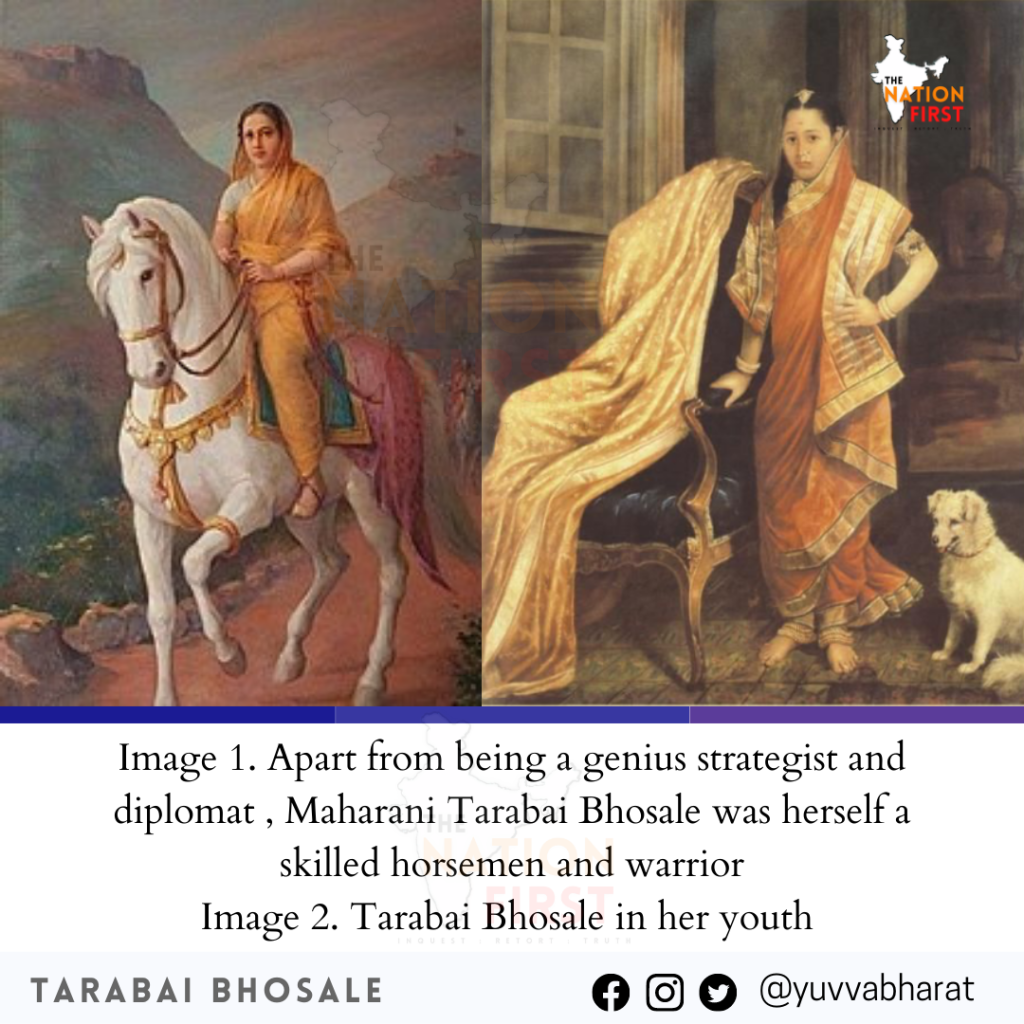
When the Mughal army heard this news, they were delighted by the prospect of an easy end to the Maratha menace, assuming that a woman and an infant would not provide much resistance. They would soon learn otherwise.
Though grief-stricken by the loss of her husband, Tarabai did not waste time on tears. Instead, she threw herself into organizing a well-planned and vigorous opposition to Aurangzeb. In fact, in his book, A Social History of the Deccan, historian Richard Eaton quotes the following lines by Khafi Khan (court chronicler of the Mughals and the author of Muntkhab al-Lubab):
[The Mughals felt] that it would not be difficult to overcome two young children and a helpless woman. They thought their enemy weak, contemptible and helpless; but Tara Bai, as the wife of Ram Raja [i.e. Rajaram] was called, showed great powers of command and government, and from day to day the war spread and the power of the Mahrattas increased.
An intelligent woman, Tarabai had earned a reputation during her husband’s lifetime for her knowledge of civil, diplomatic and military matters. She used this knowledge to lead from the front —travelling between forts, forging crucial partnerships, mobilizing resources and men.
A skilled cavalry warrior, she also motivated her commanders and soldiers by personally leading aggressive attacks on the enemy.
Khafi Khan (court historian of Aurangzeb) wrote about the continuous raids waged by Tarabai Bhosale.
“They penetrated deep into the old territories of the Imperial throne, plundering and destroying wherever they went.”
Khafi khan (court historian of Aurangzeb)
The commanders of Tarabai cast the anchor of permanence wherever they penetrated and having appointed Kamaish dars (Revenue collectors), they passed the years and months to their satisfaction, with their wives and children, tents and elephants.
Their daring went beyond all bounds. They divided all the disticts (Parganas) amongst themselves and following the practice of the imperial rule they appointed their Subadars (Provincial governors), Kamaish dars (revenue collectors), and Rahdars (toll collectors).”
He also stated
“ She (Tarabai Bhosale) won the hearts of her officers and or all the struggles and schemes and seizes of Aurangzeb up to the end of his reign the power of the Marathas increased day by day.”
Quoted from saffron swords
The war between the Marathas and the Mughals continued for 27 years. Later it was known as the Maratha war of Independence.
Due to continuous attacks of Tarabai Bhosale, Aurangzeb shifted his full focus on the south India and towards the hills of Western Ghats. Due to this the area of Gujrat and Malwa became vulnerable. Tarabai took this advantage and invaded the region of Malwa (region of Ujjain, Burhanpur,Munda, Sironji) and Surat even when the Mughals were able to capture their important forts.
Read About: Rani Durgavati : Fearless Queen Of Gondwana
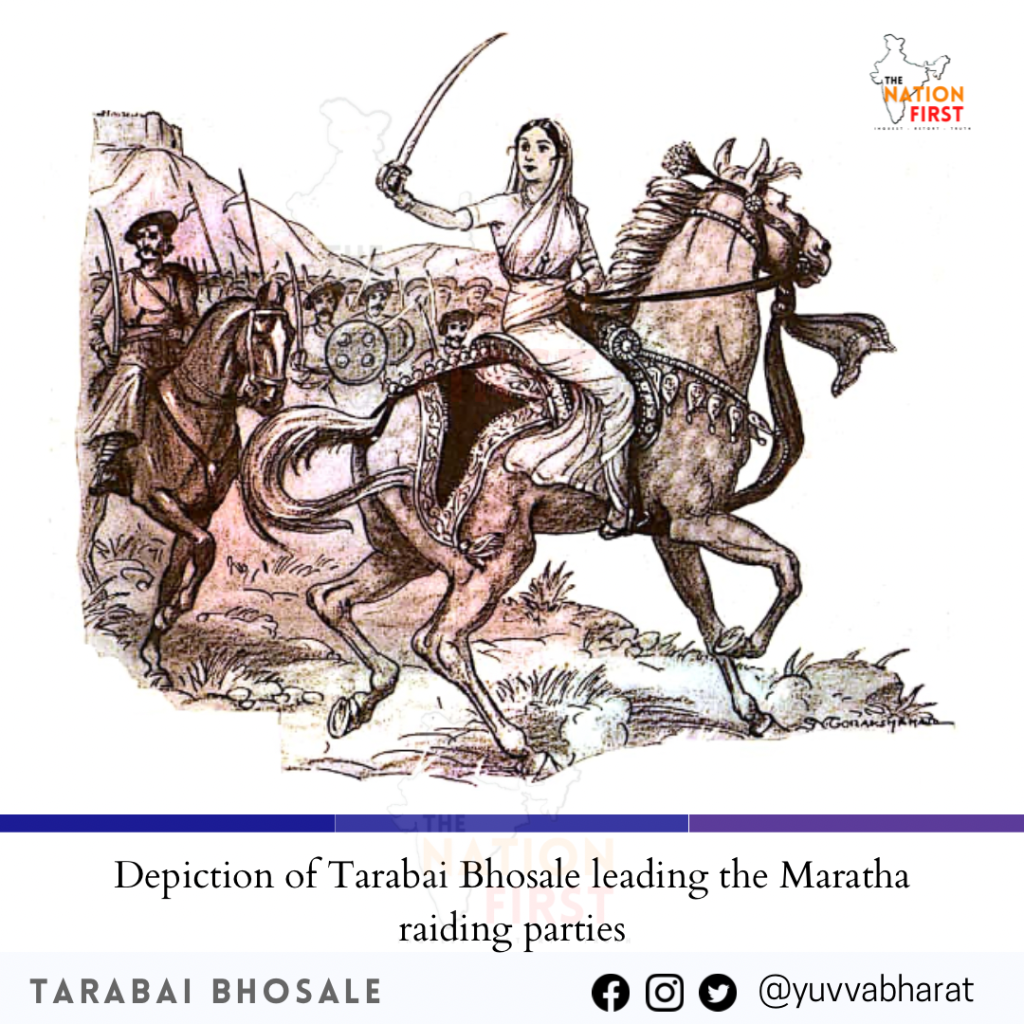
Unlike most leaders, Tarabai Bhosale , being a skilled warrior and strategist ,herself accompanied the soldiers on the missions. Some of her major military campaigns were:
- In 1700, she sent a forces of 50000 soldiers in the region of west Chanderi (present day Madhya Pradesh)
- In 1702 she invaded Khadesh (region of northwestern Maharashtra), Berar and Telangana.
- In 1703, she attacked urban centers in Khandesh.
- In 1705, the Marathas under Tarabai again attacked Gujarat and Khandesh.
Under her rule, the Maratha army established their rule over Southern Karnataka and plundered several rich towns of the country’s western coast (such as Burhanpur, Surat and Broach).
Later years and Legacy of Tarabai Bhosale
After the death of Aurangzeb (at age of 82) in 1707, the war of the Marathas against the Mughal ended and after some time to develop a civil war in between the Marathas the Mughals released Sambhaji Maharaj’s son Shahuji.
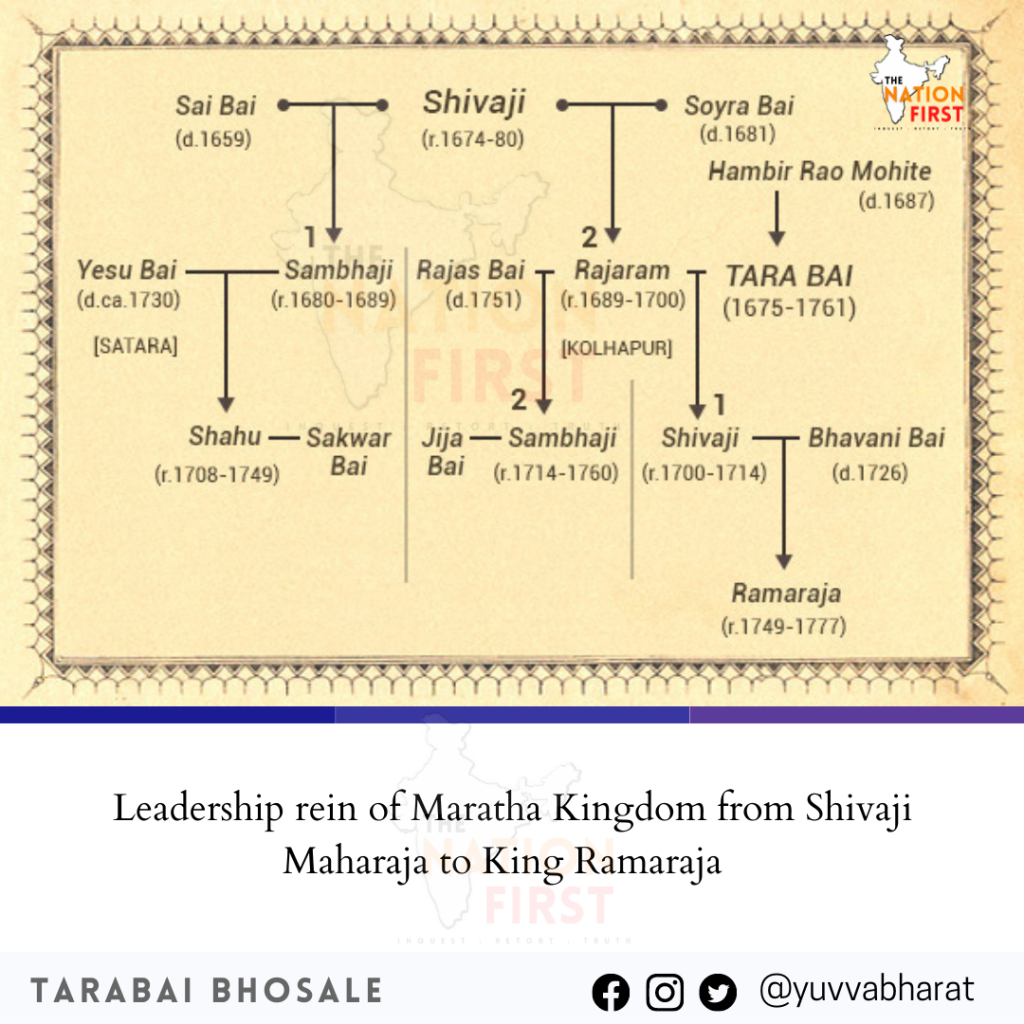
The Maratha leaders supported Shahuji and he became their leader in 1708 after defeating Tarabia Bhosale at the battle of Khed.
Later Tarabai and her son Shivaji 2 were imprisoned till 1730. But She died at the age of 86 in 1761 after third battle of Panipat. But even then her importance was remembered and soon she was given her sovereign independence and remained a dignified elderly woman that ran numerous affairs and took important decisions for the Maratha Kingdom.
It is because of Tarabai Bhosale’s courageous efforts that saved the Maratha Empire from the wrath of Aurangzeb and the Marathas dream of Swaraj survived only because her. Had she not took Charge of the Maratha Empire at the time she did, the Maratha empire might not have survived to reach the glory it did.
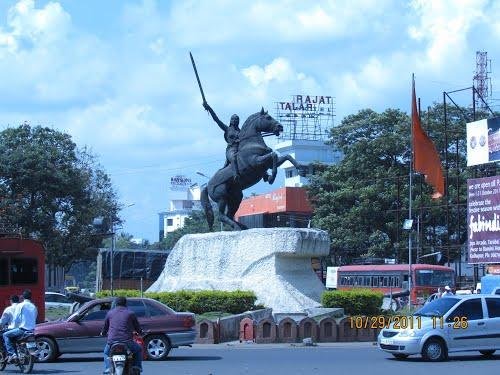
sources:
